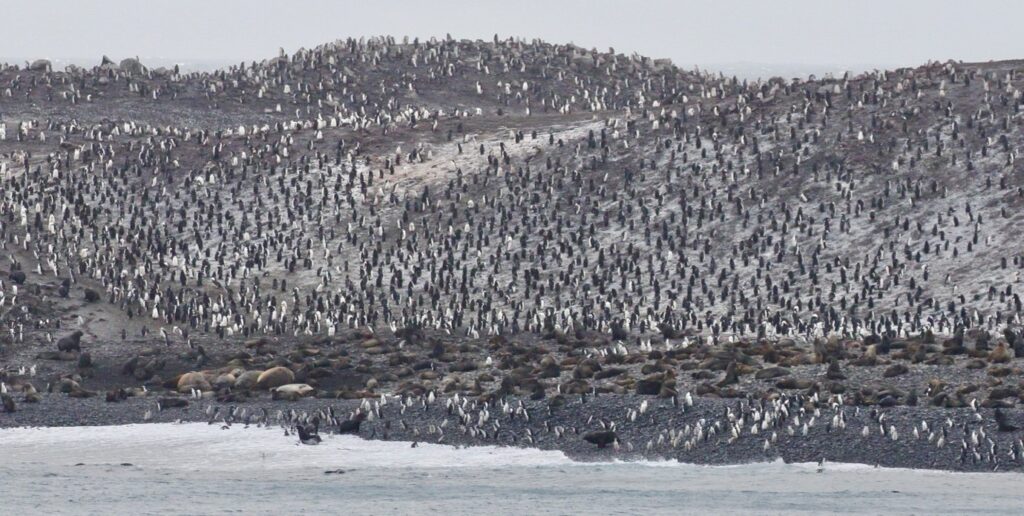A special collection of scientific papers featured in the Journal Deep Sea Research Part II, has been dedicated to the South Sandwich Islands. Scientists from the Centre for Environment, Fisheries and Aquaculture Science (Cefas) collaborated on several of the papers with researchers from around the world to shed light on and provide new insights into this unique environment.
Chinstrap penguin colony on Southern Thule. Photo: Chris Darby.
A blog from Cefas shines light on this research and the islands:
Shaped by ice and fire, the volcanic South Sandwich Islands are a remote sub-Antarctic archipelago that have remained largely uninhabited since their discovery by polar explorers in the 18th century. In winter, sea ice extends northwards across the two hundred miles of the archipelago encasing most of the islands in its frozen grip, before retreating again in the spring when the regions waters bloom with life. This remote UK overseas territory is home to vast colonies of penguins and other seabirds, including an estimated one third of the world’s population of chinstrap penguins. It is also part of the South Georgia and South Sandwich Islands Marine Protected Area (MPA), one of the world’s largest, covering 1.24 million km2 (an area 5 times larger than the UK). Beneath the water, due to the proximity to nutrient rich currents and the islands’ position in the sea-ice zone, a wide range of marine habitats flourish, making the region both productive and biodiverse. Even so, their remote location means that little was known about the islands’ environment and ecosystems.This is changing.
The full blog from Cefas can be read here.

No Comment